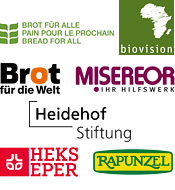News
23.08.2016
Adios Monsanto: US giant to give up GMO maize seed plant in Argentina
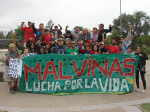
Monsanto is to abandon the construction of a huge seed treatment plant for genetically modified maize seeds in the province of Córdoba, Argentina, following fierce protests from local residents over the past three years. According to media reports published in early August, the first part of the not even half-built plant in the rural town of Malvinas Argentinas was dismantled and machinery removed from the construction site. The US seed company has not yet issued an official statement but local Argentinean media cited a source from the head office of Monsanto in Latin America who said the company will give up the project because building the plant will no longer be profitable due a recent reduction in the area planted with genetically modified corn in the country. “The plant was designed to treat 3.5 million hectares of maize, however last year only 2.5 million hectares were sown,” the source told iProfesional. “Such an investment does not make sense from an economic point of view.” Monsanto has another factory for the production of genetically modified seeds in Rojas, in the province of Buenos Aires. “How things are at the moment, this corn processing plant alone will probably be sufficient for the next five years.” However, the spokesman also admitted that local protests by activists and environmentalists had influenced the decision to pull out of the project. Since 2013, citizens have maintained a blockade of the construction site preventing the entry of building material and fuel. In 2014, a provincial court ruled that the construction permit for the plant was unconstitutional. It ordered a halt to construction works and ordered an environmental impact assessment. “Justice was done. The company should have taken the decision to leave long ago,” said Vanesa Sartori, a member of the Assembly Malvinas Lucha por la Vida. “We will remain vigilant and follow the matter closely to see how this story will end until Monsanto has taken the final screw from site and left once and for all,” Sartori announced. Sofia Gatica, one of the leaders of the protest in Malvinas, was also greatly relieved: “We have stayed here for almost three years, in the morning, afternoon and evening, despite hunger and cold, without light or toilets. A lot of people from different places have united at the camp. Marriages have split up because our husbands told us to choose between Monsanto and them,” Gatica told local news channel CBA24n.”If those at the bottom move, those at the top fall,” she added. (ab)
11.08.2016
Agriculture and overexploitation main drivers of species loss, study
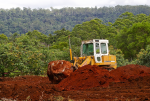
Agriculture and the overexploitation of plants and animal species are more significant drivers of biodiversity loss than climate change, according to new research published in the journal Nature on August 11th. The team led by scientists from the University of Queensland, Australia found that almost three-quarters of the world’s endangered species faced these threats, compared to just 19% affected by climate change. “Addressing overharvesting and agricultural activities are key to turning around the biodiversity extinction crisis,” said lead author Sean Maxwell of the University of Queensland. “This must be at the forefront of the conservation agenda.” Together with the Wildlife Conservation Society and the International Union for the Conservation of Nature (IUCN), the researchers assessed 8,688 near-threatened or threatened species on the IUCN’s “red list”. They quantified information for 11 threats: overexploitation, agricultural activity, urban development, invasion and disease, pollution, ecosystem modification, climate change, human disturbance, transport and energy production. The analysis showed that 72 per cent or 6241 species were overexploited, meaning that the harvesting of species from the wild happened at rates not compensated for by reproduction or regrowth, for example through logging, hunting, fishing or gathering species from the wild. These included the Sumatran rhinoceros, western gorilla and Chinese pangolin – all illegally hunted for their body parts and meat. Some 5,407 species or 62% were threatened by agriculture alone. Africa’s cheetah, Asia’s hairy-nosed otter and South America’s huemul deer are among the animals most affected by crop and livestock farming, timber plantations and aquaculture. However, the authors underlined that there are effective tools and approaches to alleviate harm caused by overexploitation and agricultural activities. “History has taught us that minimising impacts from overharvesting and agriculture require a variety of conservation actions but these can be achieved,” said co-author Associate Professor James Watson. “Actions such as well managed protected areas, enforcement of hunting regulations, and managing agricultural systems in ways that allow threatened species to persist within them all have a major role to play in reducing the biodiversity crisis,” he added. Other measures recommended by the authors are the establishment of protected areas to safeguard key biodiversity areas; the regulation of pesticide and fertilizer use and the certification of agricultural sustainability. “These activities need to be well funded and prioritised in areas that will reduce threat,” said James Watson. (ab)
08.08.2016
Humanity has already exhausted Earth’s natural resources for 2016

August 8th marks Earth Overshoot Day this year – the day humanity has used up the natural resources the world can supply in a year, according to data from Global Footprint Network, an international sustainability think tank. The date is calculated each year by contrasting the world’s demand on nature (ecological footprint) with the biocapacity - forests, pastures, cropland and fisheries as well as the planet’s ability to replenish resources and absorb waste, including carbon dioxide emissions. The world enters ecological ‘overshoot’ this year five days earlier than in 2015. The day has moved up on the calendar from early October in 2000, showing that humans are exhausting the world's resources faster than ever. For the rest of the year, we will be living on resources borrowed from future generations. According to the Global Footprint Network, the estimated level of resources and ecosystem services required to support human activities today is just over 1.6 Earths. If we continue on the course estimated by moderate United Nations projections for increasing population and consumption, we would need the capacity of two Earths to keep up with our level of demand by 2030. If everyone on Earth lived as Australians do, it would take 5.4 Earths to sustain global consumption. If the entire world population followed US citizens’ example, it would take 4.8 Earths. The costs of this ecological overspending are becoming more evident in the form of deforestation, drought, fresh-water scarcity, soil erosion, biodiversity loss and the buildup of carbon dioxide in the atmosphere. According to the Global Footprint Network, carbon emissions are the fastest growing contributor to ecological overshoot, with the carbon footprint now making up 60% of humanity’s demand on nature. “The Paris climate agreement is the strongest statement yet about the need to reduce the carbon footprint drastically. Ultimately, collapse or stability is a choice,” said Mathis Wackernagel, co-founder and CEO of the network. “We forcefully recommend nations, cities and individuals take swift, bold actions to make the Paris goals an attainable reality.” One of the measures the think tank recommends is choosing a vegetarian alternative to steaks and burgers as often as possible since it takes more productive land to produce meat than vegetables or grain. The Global Footprint Network also hopes for a change of the current trend of growing meat consumption in China. The government has outlined a plan to reduce its citizens’ meat consumption by 50%, which it calculates will lower the carbon dioxide equivalent emissions from China’s livestock industry by 1 billion tonnes by 2030. (ab)
04.08.2016
Italy adopts new law to cut down on food waste

Italy has adopted a new law designed to drastically reduce food waste across the country. The Italian Senate passed the bill on Tuesday with an overwhelming majority of 181 votes in favour by only 16 abstentions. The new regulations, which come six months after a similar bill was passed in France, aim to cut food waste by one million tonnes from the estimated five Italy wastes each year. “The new laws make it easier for shops and restaurants to give excess food away to charitable causes,” Maria Chiara Gadda, the Democratic Party MP who introduced the bill, told the Italian newspaper La Repubblica. Unlike the French law, which introduced heavy fines of up to €75,000 for supermarkets that throw away unsold food, the Italian approach is to incentivise surplus product donations by lowering the bureaucratic burden of food donations. The new law will cut red tape which made it difficult for food stores, supermarkets or restaurants to donate excess food since donations had to be declared five days in advance. With the new regulations, retailers would only have to declare all their donations by the end of the month. In addition, the new law clarifies that food may still be donated even if it is past its sell-by date and allows companies to donate food that has been mislabelled as long as it does not pose any health risk. Italian agriculture minister Maurizio Martina said the law was “one of the most beautiful and concrete heritages” of last year’s Universal Exposition hosted by Milan. “This provision confirms that Italy is at the forefront in the fight against food waste, a problem of still unacceptable proportions. With this law we are getting closer to achieving our aim of saving one million tonnes of food and donating it to those in need thanks to the indispensable work of our charities,” Martina said. According to food producers’ organisation Coldiretti, Italy throws away 5.6 million tonnes of food every year worth an estimated €12.5 billion. Italy will also invest in a campaign to promote the use of ‘doggy bags’ in restaurants, encouraging diners to take their leftovers home. In Italy, the bags will be called “family bags” in order to make it easier for Italians to free themselves of the notion that it was indecent to request to take home uneaten food. (ab)
03.08.2016
Palm oil is driving deforestation and biodiversity loss, study

Vulnerable tropical forests and species on four continents face increased risk of loss due to growing global demand for palm oil, a new study finds. As palm oil production expands from Southeast Asia into the Americas and Africa, large areas of tropical forest are being converted into oil palm plantations in 43 countries, according to researchers at Duke University who published their findings on July 27 in the journal PLOS ONE. “Almost all oil palm is grown in places that once were tropical forests. Clearing these forests threatens biodiversity and increases greenhouse gas emissions,” said Varsha Vijay, a doctoral student at Duke’s Nicholas School of the Environment who led the study. Using 25 years of high-resolution satellite imagery from Google Earth and Landsat, Vijay and her team tracked the extent of palmoil-driven deforestation in four regions: Southeast Asia, Africa, South America and Mesoamerica. They then compared the data to countrywide trends in FAO data for oil palm planted area. Rates of recent deforestation have been highest in Southeast Asia and South America, particularly Indonesia, Ecuador and Peru, where more than half of all oil palms are grown on land cleared since 1989, they found. In Southeast Asia, 45% of sampled oil palm plantations came from areas that were forests in 1989. For South America, the percentage was 31%. By contrast, in Mesoamerica and Africa, the researchers observed only 2% and 7% of oil palm plantations coming from areas that were forest in 1989. The researchers warn that vulnerable forests in all four regions of palmoil production contain many species at risk of extinction. “While the Amazon and Indonesia have many species of globally threatened mammals and birds, other areas such as the Congo Basin and the coastal forests of Colombia are home to species with small ranges that make them especially vulnerable to habitat loss despite not being classified as threatened or endangered,” said Stuart Pimm, one of the authors. “This needs to be considered in conservation planning.” Since the biodiversity impacts of this expansion are very different from country to country and region to region, local conservation strategies, tailored to each region’s differing threats, will be needed to protect at-risk species, the authors conclude. (ab)
28.07.2016
Report reveals environmental and social cost of EU’s land footprint
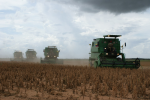
The European Union uses far more than its fair share of global agricultural land, with high environmental and social impacts in other world regions. According to a new report published on 27 July by Friends of the Earth Europe, the EU requires almost 270 million hectares of agricultural land to sustain its unsustainable food production and agricultural practices. Almost 40% of this land is outside Europe, an area the size of Italy and France combined. The report estimates that average EU per capita cropland consumption is 1.5 times higher than the global average, highlighting an inequitable distribution of global land resources and an overstepping of planetary boundaries. Every EU citizien on averages uses 3100 square metres of arable land although there are only 2000m2 per person available if the total global surface area of arable land of around 1.4 billion hectares is divided by the number of people on the planet. “Overconsumption is eating up ever more land, often with disastrous consequences. It is unjust, irresponsible and unsustainable that we continue to use more than our fair share of global land and are shifting more than one-third of the impacts related to land consumption to ecosystems and communities outside of the EU,” said Meadhbh Bolger, resource use campaigner at Friends of the Earth Europe. The EU’s demand for land negatively affects the environment mainly through expanding agriculture into areas of nature or previously unfarmed land. This pressurises global ecosystems, drives forest conversions into plantations, lessens forests’ carbon storage capacity, and causes land degradation and biodiversity loss, the report warns. But the EU’s huge demand for land abroad is also provoking land grabs and the unequal appropriation of resources, depriving local communities of their access to land and the right to define their own food system. Animal products like meat and dairy account for over 70% of the overall land footprint of 196 million hectares of land, with the largest portions for meat (30% of the total) and dairy (25% of the total, mostly cheese). The second biggest grouping is vegetable oils, followed by other plant-based products; wheat; fruit, vegetables and spices; alcohol; and coffee, tea and cacao. According to Stanka Becheva, food campaigner at Friends of the Earth Europe, we need a radical overhaul in how and where we use land to reduce this inequitable footprint: “Industrialised agriculture and global food chains are swallowing up land across the globe, damaging the environment and rural communities. We rapidly need a just transition to a greener way of farming that works for all people and the planet.” In order to reduce the EU’s unsustainable land footprint, the authors of the report recommend the development of policies and incentives that encourage a reduction in the consumption of land intensive products or products that embody relatively high environmental impacts, in particular animal products. (ab)
26.07.2016
Biodiversity falls below ‘safe levels’ globally, scientists warn

Land use and related pressures have pushed biodiversity loss beyond safe levels in most of the world, threatening key ecosystem functions and long-term sustainable development, an international team of researchers has found. According to a comprehensive study published in the journal Science on July 15, habitat destruction has reduced the variety of plants and animals to the point that ecological systems are at risk of collapsing. Analysing over 2 million records for nearly 40,000 terrestrial species at 18,659 sites, the team modeled how biodiversity in every square kilometre of land has changed due to human activities. They found that for 58.1% of the world’s land surface, where 71.4% of the global population live, the level of biodiversity loss has fallen below levels that define a safe operating space for humanity. “This is the first time we’ve quantified the effect of habitat loss on biodiversity globally in such detail and we’ve found that across most of the world biodiversity loss is no longer within the safe limit suggested by ecologists,” explained lead researcher, Dr Tim Newbold from University College London. A site losing more than 10% of its biodiversity is considered to have passed beyond the ‘safe limits’ recently defined by the planetary boundaries framework. Grasslands, savannas and shrublands were most affected by biodiversity loss, followed by many of the world’s forests and woodlands. The team says that the ability of biodiversity in these areas to support key ecosystem functions such as growth of living organisms and nutrient cycling has become increasingly uncertain. The authors warn that levels of biodiversity loss are so high that efforts towards long-term sustainable development could be seriously undermined if the transgression of this planetary boundary is left unchecked. “It’s worrying that land use has already pushed biodiversity below the level proposed as a safe limit,” said Professor Andy Purvis of the Natural History Museum, London, who is one of the authors. “Decision-makers worry a lot about economic recessions, but an ecological recession could have even worse consequences – and the biodiversity damage we’ve had means we’re at risk of that happening. Until and unless we can bring biodiversity back up, we’re playing ecological roulette,” he added. (ab)
21.07.2016
TTIP will promote the expansion of industrial meat production, new report
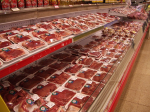
TTIP will promote the expansion of industrial meat production, lower standards that protect public health, and undermine governments’ ability to create essential labour, environmental and animal welfare reforms in the future. This is the warning of a new report launched by the Institute for Agriculture and Trade Policy (IATP) Europe, Arbeitsgemeinschaft bäuerliche Landwirtschaft, Compassion in World Farming and PowerShift on July 13, which analyses public negotiating positions, leaked negotiating texts, and industry documents. The report documents how the Transatlantic Trade and Investment Partnership (TTIP) empowers the global meat industry and undermines family farming at a time when civil society is demanding the opposite – meat produced humanely, locally, free of harmful substances and benefiting rather than degrading the environment. The authors warn that TTIP will accelerate corporate concentration and expand industrial meat production or “factory farming” by increasing the power of meat-producing transnational corporations. One of the report's key messages is that liberalizing tariffs will make EU meat products even less competitive, increasing pressure in the EU to adopt even cheaper, industrialised practices that will take a heavy toll on the environment and public health. “A TTIP deal would hand over Europe’s animal farming sector on a silver platter to transnational meat corporations – through tariffs and quota expansions, but definitively through the sweeping de-regulatory changes the industry hopes to win through the accord,” says IATP Europe’s Director and co-author of the report, Shefali Sharma. She argues that TTIP will disincentivise new regulations that seek to discipline the industry’s worse practices, particularly if these rules raise the cost of production. “The U.S. simply lacks essential rules that should curb the industry’s worse practices that cost taxpayers millions in environmental and public health costs. With TTIP, the EU industry will ensure that pending decisions on critical issues such as cloning, glyphosate and factory farms’ methane emissions are made with trade ‘competitiveness’ in mind and not the public interest,” Sharma adds. According to Sharon Treat, lead author and former U.S. state legislator, “the analysis clearly shows that regulatory processes for key issues that the European and American public care about – from climate change, GMOs, country of origin labelling or future rules on technologies such as gene editing – will be affected.” Therefore, TTIP should be recognised for what it is, she argues: “a multi-pronged strategy promoted by global agribusiness concerns on both sides of the Atlantic that will establish an ongoing mechanism for deregulation and meat industry consolidation.” The report concludes that TTIP is undemocratic; the policies it promotes are unsustainable; and that it must be rejected by anyone who cares about good food and farming, human and animal rights and the future of our planet. (ab)
18.07.2016
Half of US food produce is thrown away, new research shows
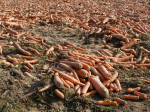
Vast amounts of fresh produce grown in the United States is being thrown away because of unrealistic cosmetic standards for food according to research released by The Guardian. Due to retailers’ and consumers’ demand for perfect fruits and vegetables, still edible high-value and nutritious food is left in the field to rot, fed to livestock or sent directly from the field to landfill. The Guardian interviews with dozens of farmers, packers, truckers, researchers, campaigners and government sources suggest that the actual amount of food waste might be larger than official figures document. A government study found that about 60m tonnes of produce worth about $160bn is wasted by retailers and consumers each year – about one third of all foodstuffs. But the Guardian reports that this refers just to “downstream” food waste while the waste that occurs “upstream” is a major problem: “scarred vegetables regularly abandoned in the field to reduce the expense and labour involved in harvesting. Or left to rot in a warehouse because of minor blemishes that do not necessarily affect freshness or quality.” The researchers estimate that when added to the retail waste, food waste amounts close to half of all produce grown. “It’s all about blemish-free produce,” Jay Johnson, who ships fresh fruit and vegetables from North Carolina and central Florida, told The Guardian. “What happens in our business today is that it is either perfect, or it gets rejected. It is perfect to them, or they turn it down. And then you are stuck.” Wayde Kirschenman, whose family has been growing potatoes and other vegetables near Bakersfield, California, estimates that “at times there is 25% of the crop that is just thrown away or fed to cattle. Sometimes it can be worse.” These large amounts of food waste inflict a heavy toll on the environment and are a direct challenge to fight hunger and poverty. Food waste on the consumer side also causes high costs for households. The average family of four, for instance, wastes about $1,600 worth of food a year. For farmers, the power of the retail chains creates fear along the supply chain because their produce is frequently rejected on the basis of some ideal of perfection. The farmers and truckers interviewed by The Guardian said they had seen their produce rejected on flimsy grounds, but decided against challenging the ruling with the US department of agriculture’s dispute mechanism for fear of being boycotted by powerful supermarket giants. “They are never going to buy from you again. Are you going to jeopardise $5m in sales over an $8,000 load?” said the owner of a mid-size east coast trucking company. (ab)
13.07.2016
Farm input subsidy programmes fail Africa's small-scale farmers, study finds

Farm input subsidy programmes in Africa have failed to ease rural poverty and benefit small-scale farmers, new research shows. According to a report released by the African Centre for Biodiversity on Monday, ten African governments alone have spent more than US$ 1 billion, almost 30% of their agricultural budgets, on large-scale farm input subsidy programmes (FISPs) since 2000. These programmes, which provide subsidies for fertilisers and seeds (especially hybrid maize), have mainly supported better-off farmers with larger holdings, resulted in an overuse of fertiliser and deteriorated soil quality in the region, the study has found. The paper reviewed farm input subsidy programmes in countries belonging to the Southern Africa Development Community (SADC) by exploring the re-adoption of input subsidies after the food crisis of 2007/2008. The authors write that instead of building resilient, sustainable farming and food systems and supporting Africa’s rural poor, these subsidy programmes are largely ineffective, social transfer schemes that create dependency. They argue that FISPs do not help small-scale farmers (particularly the most vulnerable, such as women) who are often side-lined as beneficiaries by district officials and village chiefs. The rural poor often cannot afford to pay the balance of the subsidy or the membership fees of farmer organisations. In addition, they frequently do not meet the criteria of government programmes, such as a minimum land allocation for planting subsidised maize, or provide proof of land tenure. Input suppliers such as seed and agrochemical companies benefit the most as they are awarded large contracts, with guaranteed markets at public expense, the study found. Despite some programmes stretching back more than a decade, rural poverty has not been reduced significantly. In Malawi, for example, there is a net transfer away from rural households using Green Revolution inputs because the additional cost is not always recouped from the sale of the harvest. According to the report, FISPs are also used as tools to gain political favour. This is the case especially in Malawi, Tanzania and Zambia and evidence suggests that significant amounts of inputs are diverted or leaked onto secondary markets by politicians or wealthy elites. In Tanzania, an estimated 60% of all inputs are lost in this way, representing a significant loss of public funds. The programmes also have a negative impact on soil health, the authors warn. The focus on hybrid maize seed has led to increased maize cultivation. In order to get subsidies, farmers expand cultivation onto marginal or fallow land. Instead of practicing sustainable soil fertility management techniques, they are offered incentives to use nitrogen-based fertilisers, which are not appropriate to many of Africa’s agro-ecological zones. The report concludes that FISPs divert resources that could be directed towards localising soil science, research and development and improving extension services and rural infrastructure - public goods with lasting benefits. The report calls for “a transition to agro-ecology to bring about the sustainable food systems of the future, formed through the collective, inclusive and democratic co-generation of the knowledge held by farmers, consumers and African governments, who are meant to serve the interests of their (farming) populations.” (ab)
